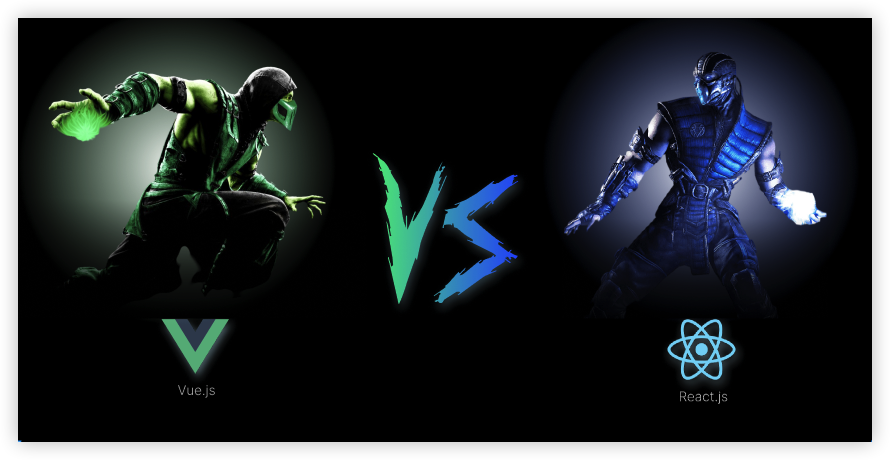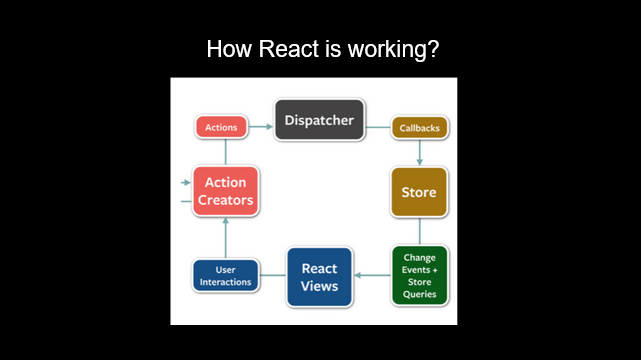

Today the battle is between the two most tough opponents; React and Vue. Both are well-known front-end JavaScript frameworks. It becomes difficult to make a comparison between React JS and Vue JS as both are highly efficient and offer venerable features so that the job of the developer becomes easier while building the web applications.
Vue.js way
2013 Google employee Evan You, using AngularJS in work on several projects, decides that it is possible to take part of this framework and create something easier to use.
2015 – Version 1.0 of Vue.js
2016 - version 2.0 with focus on performance - now uses virtual DOM, supports server rendering, ability to use JSX
2020 - Vue 3 was completely rewritten using typescript. Significant improvements in the virtual DOM implementation. The Composition API is a new way to write stateful logic for Vue components.
What Are the Advantages of Vue?
Vue.js has several features that should entice programmers to utilize it in their applications. Vue.js easily outperforms other libraries in terms of load speeds and consumption.
- Simplicity
- Linkage
- User-Friendly
- Modification
- There are a few limitations.
- Documentation is essential.
- Support
So, strengths of Vue:
- Flexible options for template or rendering functions;
- Ease of syntax and project customization;
- Faster rendering and smaller size.
What Are the Disadvantages of Vue?
Despite the benefits of using Vue.js, several disadvantages must be addressed. Although the platform is fantastic for personal initiatives, it should be utilized with prudence for more significant ventures where a lack of reliability might result in substantial losses.
Large-scale projects face a lack of support: Vue.js would be a reasonably young programming language with a small community of active workers. Furthermore, Vue.js’ software developer is modest, implying that the framework will take a couple of days to gain financial backing.
Contenders of the Future: A tiny software developer also implies that the lack of intense investigation might open the door for a new paradigm to pique the community’s attention. The framework’s development may be slowed or even halted in this circumstance.
Barriers to communication: Language problems have also been mentioned as a potential issue by some professionals. It’s worth noting that most of the programming is authored in Chinese, which might make things difficult for non-native learners. As a result, the Chinese research community appears to have a lot of assistance compared to everyone else.
Plugins are few: Support for significant plugins is absent since Vue.js is currently in development. As a result, developers will have to turn to other technologies for help. For instance, when utilizing Google Maps, it’s not commonplace for programmers to use plain JavaScript.
React.js way
React was created by Jordan Walke (Jordan Walke), who has been working at Facebook since 2013. XHP (an HTML component library for PHP) inspired him to create React. React components are usually written in JSX. Code written in JSX is compiled into React library method calls.
On April 18, 2017, Facebook introduced React Fiber, a new core algorithm of the React library for creating user interfaces. React Fiber will be the basis for any further improvements and development of features of the React system.
On September 26, 2017, a new version of React 16.0.0 was released
On October 20, 2020, React 17.0.0 was released (a pre-v18 build)
React v.18.0.0 (planned for December 2021).

Each React and Vue consists of your important option and is one of the many best in the business for ease of front-end development. The difference between Vue and React can be measured on many fronts. From scalability to the learning curve, there are many must-haves to consider when choosing between these two frameworks.
For instance, both the frameworks are known for providing high performances and are easy to learn, etc.
In addition, both the frameworks are extensively employed for designing the user interfaces and also used for working with the root library.
Also, they have similarities in reactivity and component-based structure. Another common tool is found in the presence of a virtual DOM model.
What Are the Advantages of React?
ReactJS is the most widely used open-source Javascript framework today. The above are some of the most significant advantages of ReactJS:
- Simple to understand and apply
- It’s getting easier to make dynamic web applications
- Components that can be reused
- Enhancement of performance
- The use of practical tools
- It’s well-known for being SEO-friendly.
- The advantages of having a javascript library
- The testing of codes’ scope
Strengths of React:
- Better at scale, more studied and more testable;
- Web Apps and Native Apps;
- Bigger ecosystem with more support and tools available.
What Are the Disadvantages of React?
Despite the benefits of ReactJS, there may be a few disadvantages that must be overcome. Although the platform is fantastic for personal initiatives, it must be utilized with prudence for more significant ventures where lack of reliability might result in financial damages.
The rapid rate of change: The quick pace of advancement has both advantages and disadvantages. In the case of a setback, since the industry is constantly transforming, some engineers are unwilling to relearn improved business practices regularly. Along with all the regular improvements, it may be challenging for them to keep up with these changes.
Inadequate Documentation: Another disadvantage of continuously changing technology is this. React technologies are evolving and developing rapidly, so there can be no time to describe them thoroughly. To get around this, programmers write their guidelines when new versions and technologies in their present applications evolve.
Look at the Part: ReactJS cover only the UI Components of the application. As a result, you’ll need to pick a few more components to complete the programming toolkit for the application.
JSX is like a deterrent: ReactJS use JSX. It’s a syntactic modification that lets you blend HTML plus JavaScript. Although this method has its advantages, some individuals of the design community regard JSX as an obstacle, particularly for beginning programmers. Developers grumble about the teaching curve’s intricacy.
Let’s Conclude
So, you are still thinking what to choose? Short summary for you is belov:
Places where Vue is better than React:
- Helps to create simpler and much faster web applications
- Vue.js has much improved and comprehensive documentation
- It assists in the development of template-based apps conveniently
- Has much simpler syntax, integration, and adaptability.
Where Does React Prove to be a Better Choice:
- Has an added advantage over Virtual DOM providing a wider range of API options
- Provides more flexibility when developing larger and more complex apps
- It is easier to test
- Also supports the development of mobile apps apart from web
- Offers better technical support with more information and sources available.
Also, variables like your project size, complexity and goals, have a considerable weight in your final decision. Both frameworks have their own specifications and your background as a developer plays an important part in this, as it may influence the way you deal with those particularities to benefit your project.
Do you like it? Share:
© 2025 All rights reserved.
AI Redentu
Assistant
Welcome to
Ai Assistant
Start chatting with Ai Redentu Assistant. But first, learn about its capabilities.
Portfolio
Show me Redentu's portfolio
Services
What services does Redentu offer?
Technologies
What technologies does Redentu work with?
Contact Us
How can I contact Redentu?


